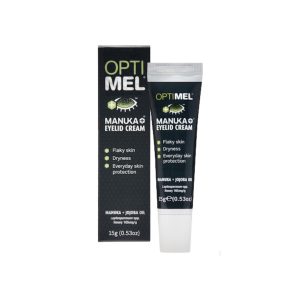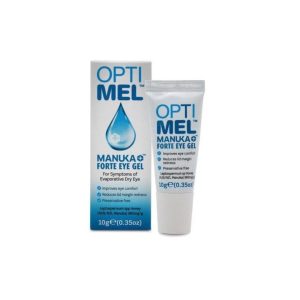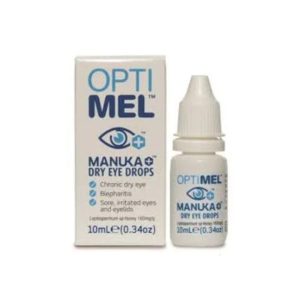Are you grappling with ongoing dryness, irritation, or discomfort in your eyes? If this resonates with you, there’s a possibility that you are among the many individuals suffering from a chronic dry eye condition that could be linked to Demodex mites. These minuscule, eight-legged organisms are a natural inhabitant of the human skin biome, particularly around the sensitive areas of the eyes and eyelids. However, when the population of these mites exceeds a normal threshold, it can lead to inflammation and exacerbate the symptoms associated with dry eye syndrome, resulting in significant discomfort and visual disturbances.
If you have been experiencing persistent and unexplained dry eye issues, it’s crucial to explore whether Demodex mites might be a contributing factor to your symptoms. In this comprehensive guide, we will empower you with the knowledge to identify the signs of a Demodex infestation, elucidate the connection between these mites and dry eye disease, and provide a detailed outline of effective treatment options designed to help manage their population and alleviate your discomfort.

Recognizing and Addressing the Symptoms of Demodex Blepharitis
Individuals suffering from Demodex Blepharitis or an overpopulation of these mites frequently experience a range of distinctive symptoms. Common signs may include:
- Persistent burning, stinging, or gritty sensations in the eyes, especially noticeable as the day progresses.
- Unexplained episodes of excessive tearing or watery eyes that are not linked to allergies.
- Red, inflamed eyelids along with irritation affecting the skin surrounding the eyes.
- Crusty, dandruff-like buildup along the eyelashes and eyelid margins, often presenting as collarettes.
- Increased sensitivity to light, creating a sensation of constant squinting.
- Fluctuating episodes of blurred vision throughout the day.
Many individuals endure these dry eye symptoms for years without realizing that an infestation of Demodex mites might be a significant underlying cause. Recognizing these symptoms is a crucial step in effectively addressing the root issue and finding appropriate relief.

Exploring the Connection Between Demodex Mites and Dry Eye Symptoms
Wondering how these tiny creatures can lead to such troublesome dry eye symptoms? Demodex mites thrive on the oils and skin cells present on the surface, particularly within the hair follicles of your eyelashes. As they feed, they release waste products, eggs, and remnants of deceased mites, which accumulate along the eyelid margins. This buildup creates a thick layer of debris and a bacterial biofilm, potentially obstructing the delicate oil glands that are essential for maintaining optimal eye health.
When these oil glands fail to release adequate oils, it leads to the rapid formation of dry patches on the eye surface. This oily tear film is crucial for preventing the rapid evaporation of the watery tears that keep our eyes moist and comfortable. The resulting inflammation from the blockage can further intensify eye irritation, redness, and the uncomfortable gritty sensation commonly associated with dry eye conditions, making it essential to address the underlying issues effectively.
Mastering the Life Cycle of Demodex Mites for Effective Treatment
Understanding the life cycle of Demodex mites is pivotal for implementing effective treatment strategies. These mites progress through distinct stages: egg, larva, nymph, and adult, over a life cycle lasting approximately 14 to 21 days. Notably, they are most active during the night, leaving their hair follicles to mate and deposit new eggs onto the skin’s surface.
This nocturnal behavior suggests that the optimal time to apply Demodex treatments is in the evening, just before bedtime. By targeting the mites during their peak activity periods, you can significantly enhance the efficacy of your treatment. However, due to their rapid reproductive capabilities, any remaining mites can quickly repopulate, underscoring the importance of continuous treatment over several weeks or even months to achieve enduring results and relief.
Effective Strategies for Managing Demodex-Related Dry Eye Issues
If your optometrist confirms a significant presence of Demodex mites through eyelash sampling or microscopic examination, they may propose a variety of treatment options to combat the infestation and restore comfort:
1. Harnessing the Power of Tea Tree Oil Eyelid Wipes and Scrubs for Effective Relief
Products infused with tea tree oil possess potent antimicrobial and antiparasitic properties, making them exceptionally effective in eliminating mites. These formulations can efficiently remove surface mites, dissolve collarettes formed by these pests, and help draw out hidden mites, rendering them more susceptible to treatment.
While tea tree oil is recognized for its efficacy against mites, it may cause stinging upon application and could be cytotoxic to healthy cells, potentially inflaming and aggravating symptoms for some individuals.
Regular use of tea tree oil eyelid wipes or scrubs before bedtime can gradually diminish the mite population. A prominent example of an effective tea tree oil treatment is OcuSoft Oust Foam, which is particularly beneficial for managing blepharitis primarily caused by Demodex mites.
2. Utilizing Gentle Hypochlorous Acid Lid Hygiene Sprays for Safe and Effective Application
Hypochlorous acid is a naturally occurring substance produced by our immune system and serves as an effective antimicrobial agent. It is gentle on the eyes, does not induce stinging, and is safe for use on our cells.
Disinfecting lid sprays and cleansing foams that incorporate hypochlorous acid not only eliminate mites but also help reduce inflammation and alleviate symptoms. Applying these solutions to the lash lines before bedtime can effectively eliminate mites and their debris. Many of these products have a distinct odor reminiscent of chlorinated pool water. Notable hypochlorous acid-based solutions include Ocusoft Hypochlor Spray and Avenova.
Among these options, Ocusoft Hypochlor Foam is often recommended due to its superior value and extended shelf life after opening, making it a practical choice for ongoing management of demodex-related issues.
3. Exploring the Therapeutic Benefits of Manuka Honey Solutions for Eye Care
Recent studies suggest that Manuka Honey solutions may be as effective as 50% tea tree oil against Demodex, although further studies are necessary in this area. While it may cause a slight sting upon application, Manuka Honey is generally less irritating compared to tea tree oil and shows excellent efficacy against various forms of blepharitis. It is non-cytotoxic and less likely to provoke inflammation in the eyelids.
Many patients report that any initial sting is well worth it, as they often experience significant relief afterward. Manuka Honey solutions are available in gel form (such as Optimel Forte, which is more effective but may sting more) and as drops (like Optimel Drops, which are easier to apply and sting less).
4. Addressing Severe Demodex Infestations with Oral Anti-Parasitic Medications
In cases where Demodex overpopulation is severe and persistent, healthcare professionals may consider prescribing oral antiparasitic medications as a viable treatment strategy. For instance, formulations such as Ivermectin in pill form have shown effectiveness in managing these infestations. Additionally, taking weekly doses of oral tea tree oil supplements over several months can help maintain mite levels in check, providing longer-lasting relief and improving overall eye comfort.
5. Exploring Professional Treatments for Advanced Demodex Management
Some specialized eye clinics offer intensive in-office treatments specifically designed for Demodex management, utilizing targeted products such as Oust Demodex Cleanser Swabstix or a handheld electric brush known as BlephEx.
The Oust Demodex Cleanser Swabstix provides targeted treatment options that can effectively assist in alleviating the impact of these troublesome mites, promoting healthier eyelid and eye surface conditions.
The Article: Demodex Mites Linked to Chronic Dry Eye Issues first appeared on https://writebuff.com.
The Article Demodex Mites and Their Connection to Chronic Dry Eye Was Found On https://limitsofstrategy.com



Comments
One response to “Demodex Mites’ Role in Chronic Dry Eye Issues”
This is such an intriguing topic! I’ve personally dealt with dry, irritated eyes for a while, and although I never suspected that Demodex mites could be a contributing factor, it definitely makes sense when you think about how these little critters can thrive in the areas around our eyes. My eye discomfort has often been brushed off as just allergies or fatigue, but this connection has me reconsidering so much.